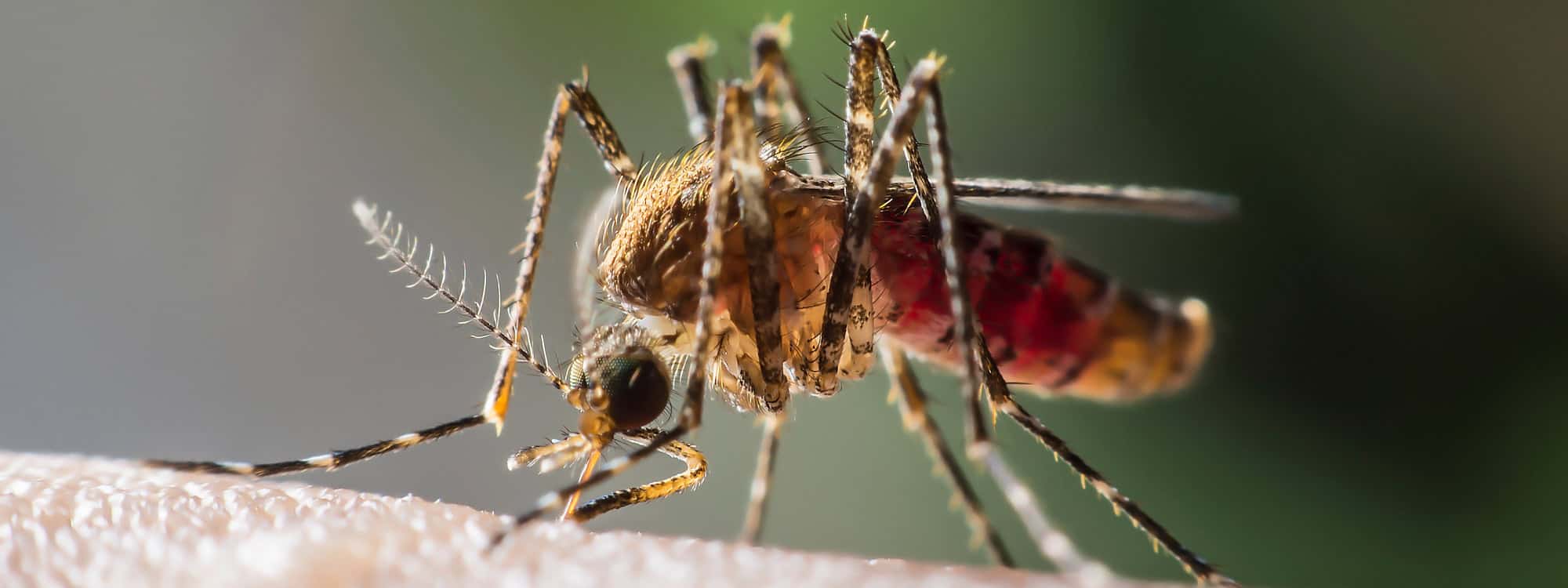Anopheles Mosquitoes
Identification: Anopheles mosquitoes are medium to large insects, generally ranging from 4 to 10 mm in length. They are easily identifiable by their distinctive resting posture: they hold their bodies at an angle, with their head and legs raised and their abdomen protruding. Their coloration can vary from pale to dark brown, and they often have spotted or banded legs. Their long, slender bodies and distinctive resting position help differentiate them from other mosquito species. The bite of Anopheles mosquitoes can be less noticeable than that of Aedes mosquitoes but is still capable of causing itching and discomfort.
Habitat: In Muskoka, Anopheles mosquitoes favor clean, unpolluted water sources for breeding. They are commonly found in areas with slow-moving or standing water, such as ponds, marshes, and river floodplains. Unlike Aedes mosquitoes, which breed in temporary water sources, Anopheles mosquitoes prefer more permanent water bodies. Their ability to breed in natural water sources makes them prevalent in both natural and managed landscapes.
Diet: Female Anopheles mosquitoes feed on blood to provide the proteins necessary for egg development. Their diet includes the blood of mammals, birds, and occasionally reptiles. Both male and female Anopheles mosquitoes consume nectar and plant juices for nourishment. Blood-feeding behavior is primarily driven by reproductive needs, and these mosquitoes are generally more active during dusk and nighttime hours.
Behavior: Anopheles mosquitoes are primarily nocturnal, with peak feeding activity occurring between dusk and dawn. They are less aggressive in their feeding compared to Aedes mosquitoes but are crucial vectors for malaria, a serious disease caused by protozoan parasites. The subtlety of their bites combined with their role in disease transmission makes them a significant concern for public health.
Prevention: To prevent Anopheles mosquito infestations, it’s essential to manage and eliminate potential breeding sites. This involves ensuring that standing water around your property is regularly maintained or treated, particularly in natural water bodies. Utilizing mosquito repellents, installing screens on windows and doors, and employing targeted insecticides can help reduce mosquito activity.
Control: Effective control of Anopheles mosquitoes requires a combination of source reduction and targeted treatment methods. This includes managing or treating permanent water sources with larvicides to control mosquito larvae and applying adulticides to reduce the population of adult mosquitoes. Regular monitoring and maintenance are key to keeping these mosquitoes under control and minimizing their impact on outdoor living spaces.
For a comprehensive solution to Anopheles mosquitoes, Bug Free Muskoka’s Mosquito Control program offers seasonal treatments from May to September, including thorough inspections, source reduction, and barrier treatments every 21 days. We provide both organic and no-spray options to ensure effective and safe mosquito control for your family and pets. Bug Free Muskoka helps ensure a more comfortable and mosquito-free environment for you and your family.

